By now, just about everyone in the Sacramento & Natomas regions should know they’re living in one of the most at-risk areas in the nation for flooding. The region is literally ringed with levees that prevent neighborhoods from becoming Venice without the gondolas.
The potential for catastrophic flooding is why U.S. Army Corps of Engineers Sacramento District is currently implementing dozens of upgrades to the region’s levees. In fact, Sacramento & Natomas are undergoing major upgrades that include improving the 42-mile ring of levees surrounding the Natomas basin, and fortifying Sacramento East Levee, also known as SREL. In all, nearly $1.8 billion in upgrades is being applied to Sacramento’s flood risk management system!
One easy-to-spot levee upgrade that is currently underway may make people scratch their heads in wonder at first. Giant-armed excavators can often be seen perched atop area levees, digging deep into the middle of them.
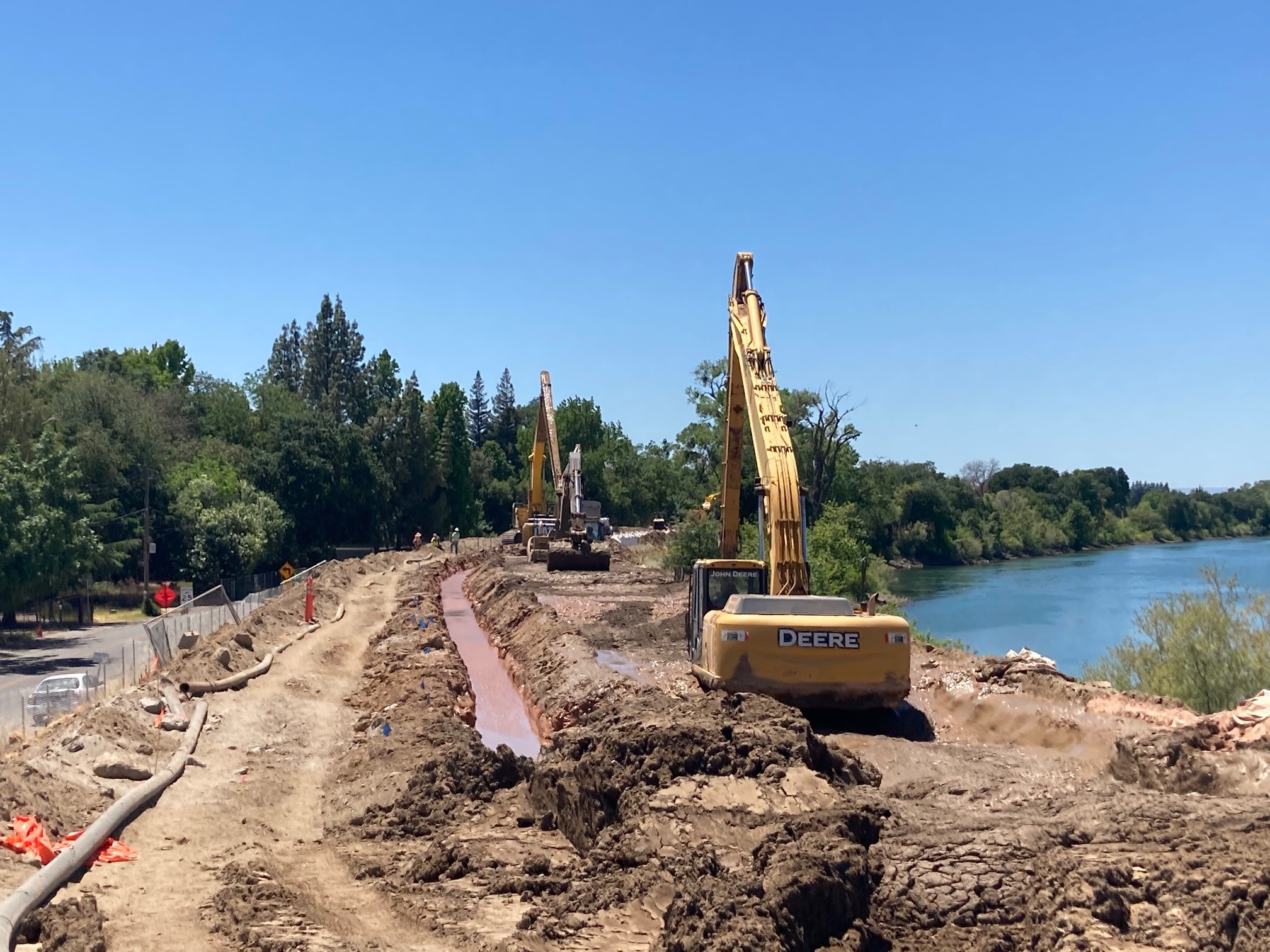
It may seem counter-intuitive that digging a 30, 60, even 100-plus-foot-deep trench down the middle of your protective barrier can make it stronger, but it is necessary for installation of what is called a slurry-based seepage cutoff wall.
During high-water events, levees can become so saturated that water will begin to flow through the levee - called through seepage, or under the levee - called under seepage.
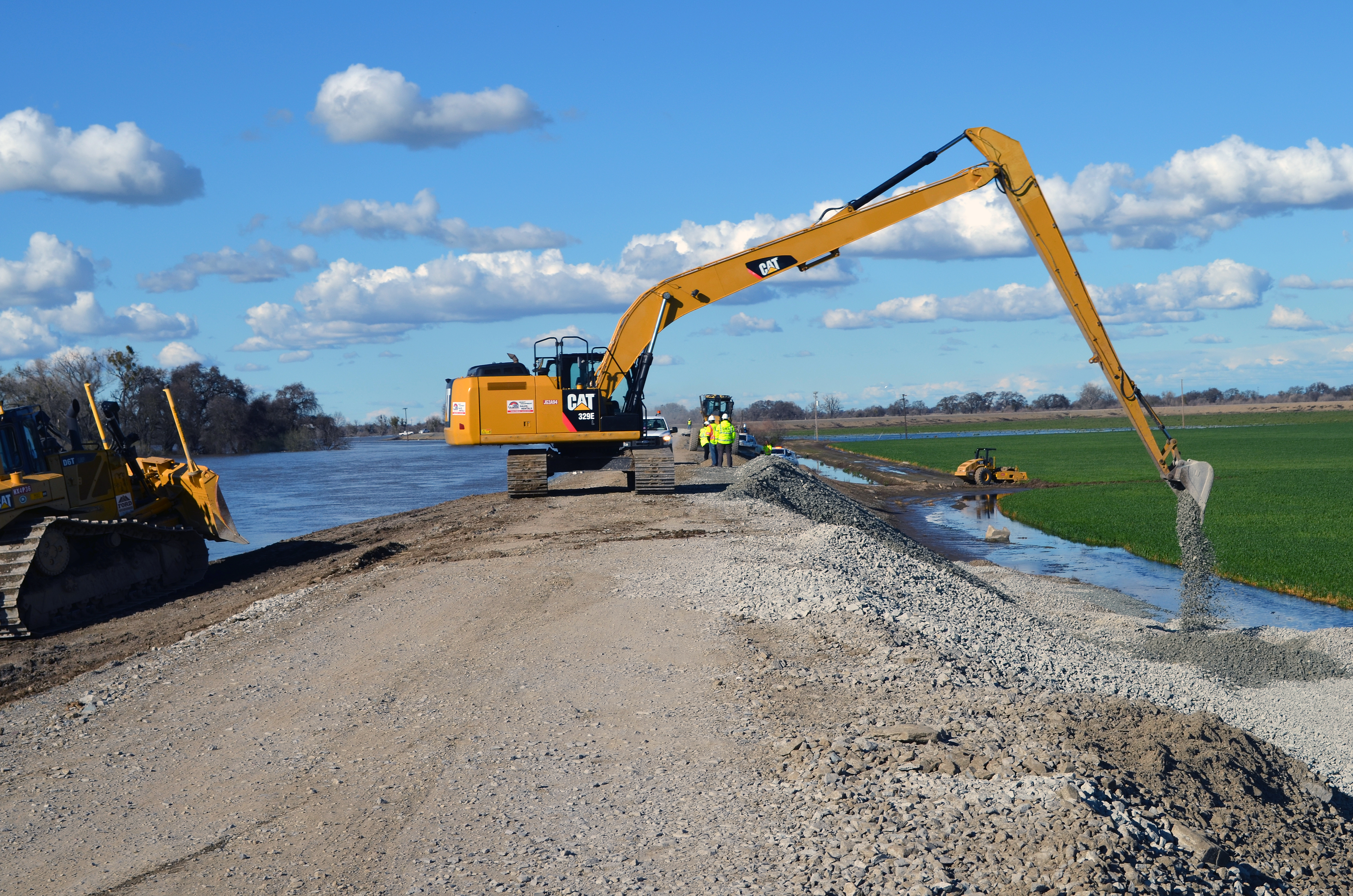
Cutoff walls are often built down the middle of levees as the solution for preventing such seepage. And around the Sacramento region, 13 miles of cutoff walls are, or will be under construction.
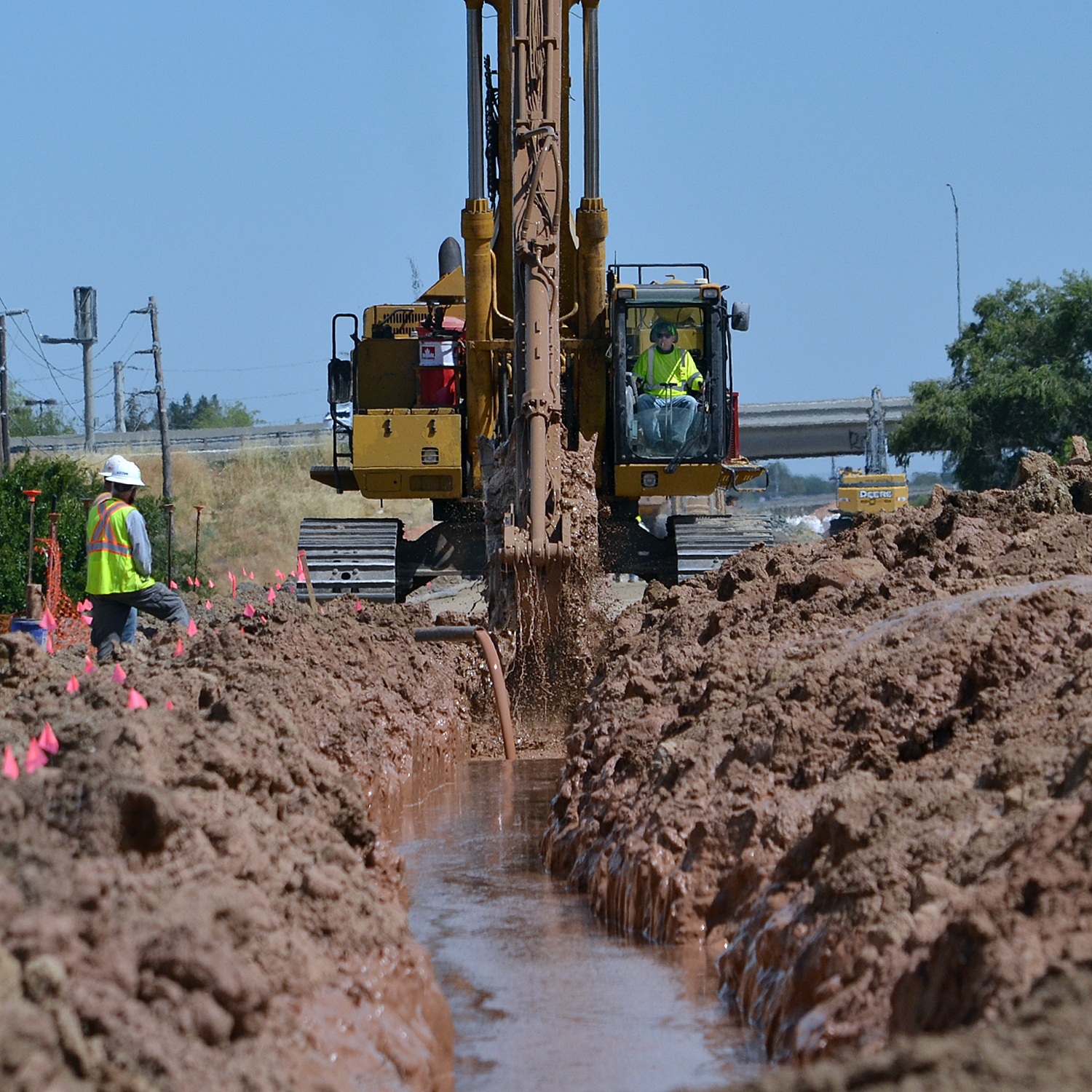
How is a cutoff wall made?
The first steps include creating a slurry pond made of water mixed with Bentonite. When mixed, the result is a thick, almost gelatinous, adobe-colored fluid.

As the cutoff wall trench is being excavated, the heavy slurry is pumped into the ditch. The viscous properties of the slurry allow the trenches to be excavated to incredible depths without caving in.
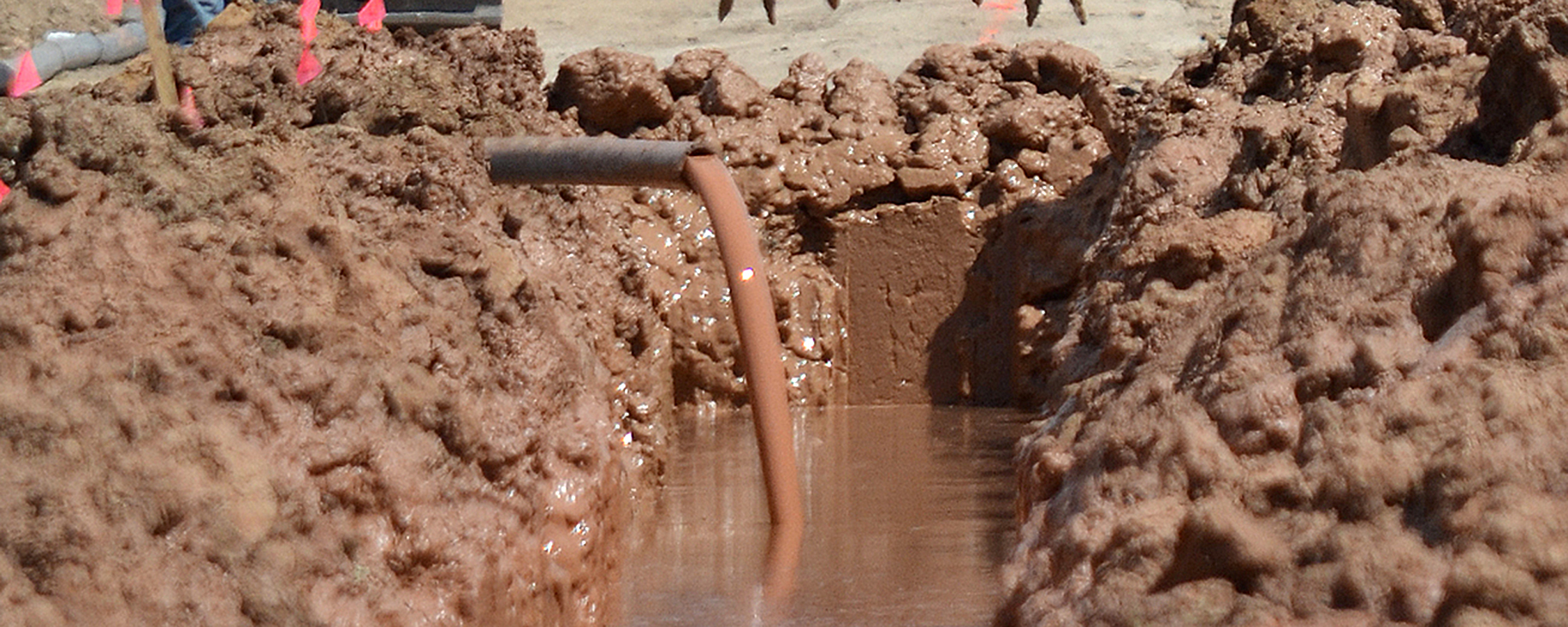
As the excavators pull soil from the trench, they place it nearby for tractors to continue mixing it with more bentonite. The tractors push, pull and stir the soil into a soupy mass of bentonite and soil, which is finally placed back into the excavated trench. During this process, both the contractor and USACE are taking samples of the slurry for testing to ensure that the slurry meets project specifications and will therefore be effective during flood conditions.
In approximately 50 – 90 days, the bentonite-soil mix hardens into an impermeable layer running down the middle of the levee. Once it has hardened, we have our cutoff wall!
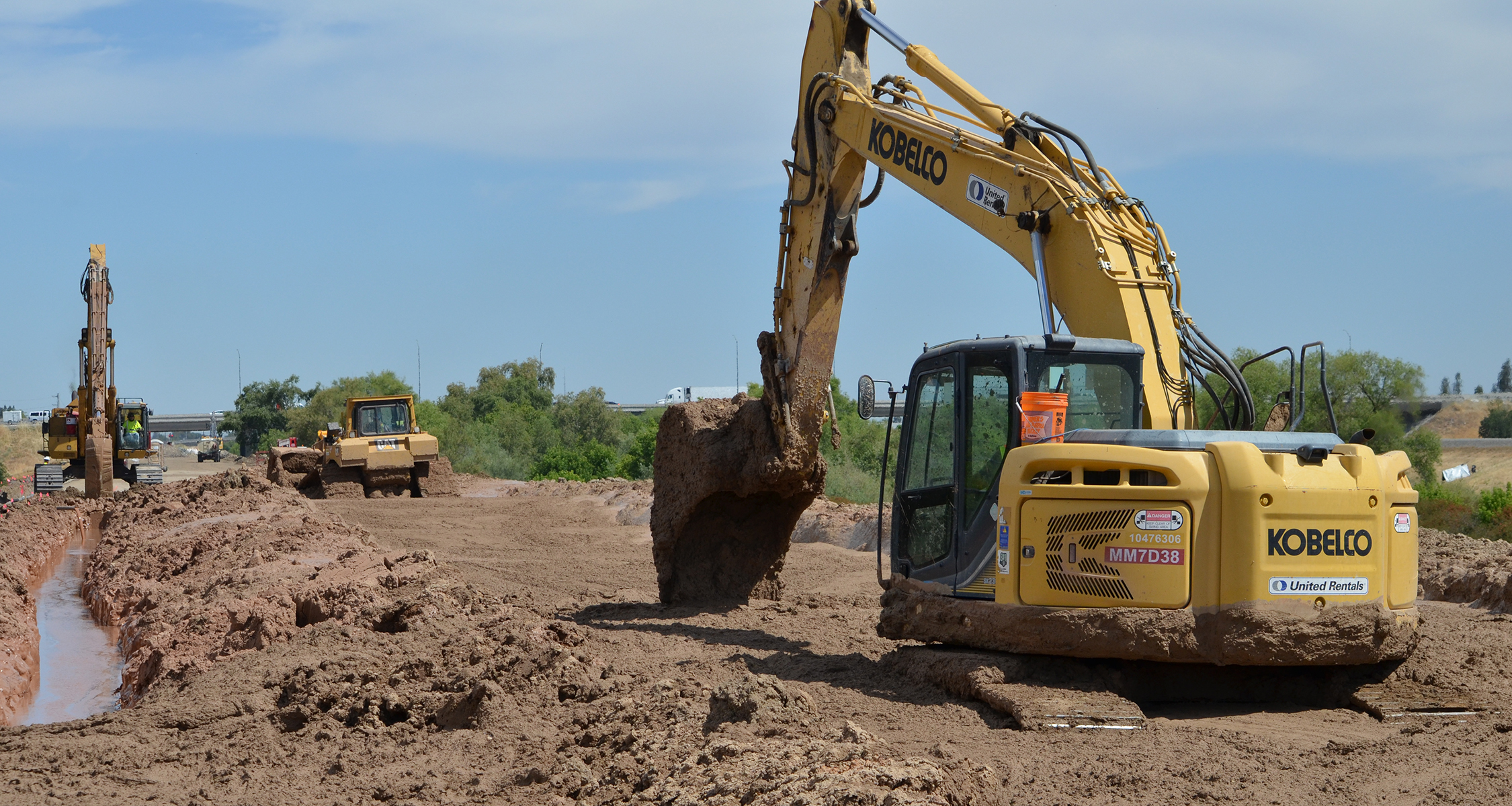
Click here for a brief video showing the building of a cutoff wall.
If you’re curious as to where all this levee improvement work is taking place, check out Sacramento District’s interactive map. You can easily find where the work is happening, as well as details on what is being done and when the work is projected to be completed.